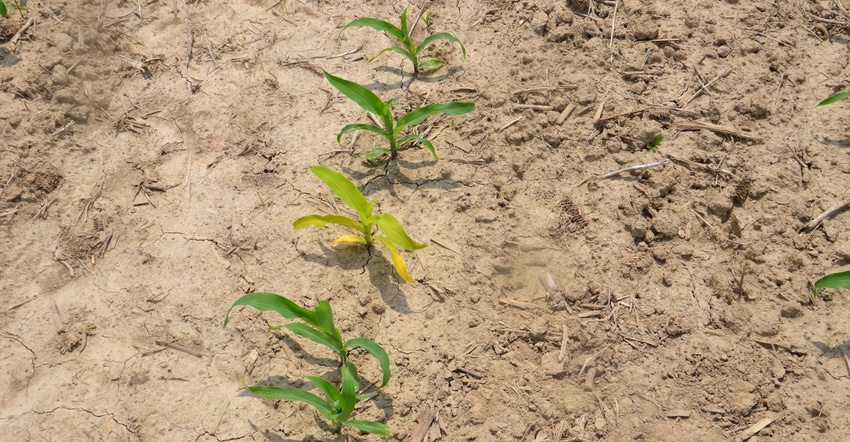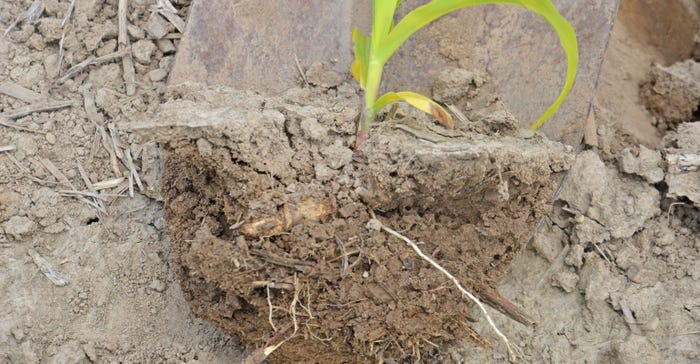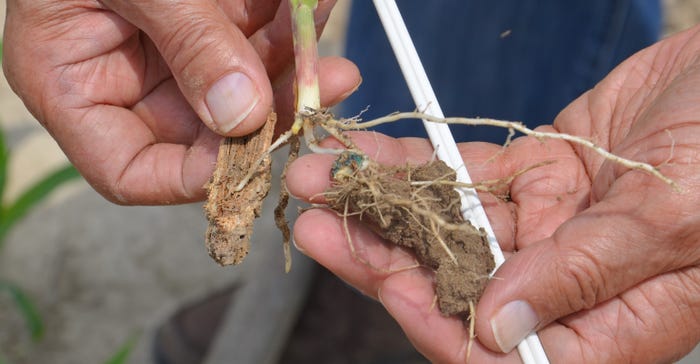
Once upon a time … OK, no, this is a real story. But it reads like fiction. Yet Dave Nanda, director of genetics for Seed Genetics Direct, can attest that it happened. Nanda was visiting the Corn Watch 2021 field about this time of year when he observed one yellow plant in a row of otherwise green plants. Seed Genetics Direct sponsors the Corn Watch project.
Related: Investigate ‘failure to launch’ cases in corn
Prologue: The need to scout fields. You don’t learn anything about how your planter performed, early-season hybrid vigor or if your management practices are hitting the mark unless you walk fields, Nanda says. “Check different areas of the field,” he adds. “Take a trowel and tape measure along. The most important thing is to keep your eyes open.”
Part 1: The observation. Nanda’s eyebrows raised when he saw one yellow plant with green plants on either side of it in the row, and with green plants opposite it in neighboring rows. “When you see something unusual, follow up and investigate,” he says.
Part 2: The investigation. The next step, in this case, was digging up the plant, Nanda says. He knew that if he couldn’t see an obvious cause, he would dig up green, healthy plants and compare them. If he still didn’t see an explanation, it might be time to consider taking tissue samples and soil samples from good and poor areas to send to a lab for analysis.

Part 3: The discovery. The “smoking gun” in this mystery turned out to be a piece of cornstalk and a small piece of corncob attached to the seedling’s roots. They were decaying residue left from when the field was in corn two years earlier. “One root was attempting to grow through the decaying residue,” Nanda observes. “Root disturbance by the residue was apparently preventing them from supplying enough nitrogen and other nutrients to the plant.”

Epilogue: The solution. When residue winds up in the seed trench, it’s called hairpinning, and it can interfere with germination and emergence. In this case, it appeared to be an isolated incident, Nanda says. If multiple plants were impacted, it would have triggered a search for ways to avoid it in the future.
About the Author(s)
You May Also Like




